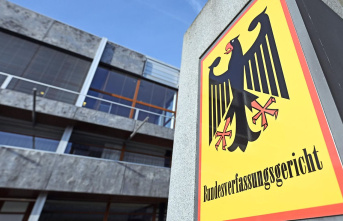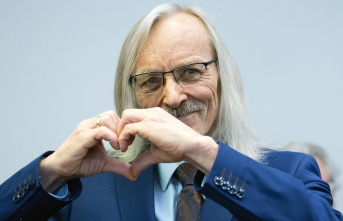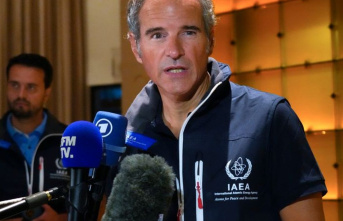For the time being, the controversial relief remains, but it is to get a new explanatory plaque: The anti-Jewish insulting relief "Judensau" on Luther's sermon church in Wittenberg will receive a new explanatory text as a clear sign against anti-Semitism. That was decided by the evangelical city church community, as a spokesman said.
For the first time, the Jewish people will be asked for forgiveness on the new explanatory panel, the spokesman said. Compared to the previous text, the community is clearly opposed to anti-Judaism and anti-Semitism.
The evangelical city parish also discussed the recommendation of an expert committee to remove the stone sculpture from the church in a timely manner. According to historians, the relief made of sandstone, which was created in the Middle Ages, shows a sow whose teats are being sucked by two people who are supposed to be identified as Jews by their pointed hats. A figure believed to be a rabbi raises the animal's tail and looks into the anus. In the Jewish faith, pigs are considered unclean.
The President of the Central Council of Jews in Germany, Josef Schuster, says that he considers a reduction in the abusive plastic to be desirable in principle. However, it should not be hidden somewhere, but should remain accessible to the public as a testimony to the guilt and responsibility of the churches.
Schuster had expected a clear and self-critical inscription on the sculpture from the Wittenberg parish in the near future. This includes remembering the consequences of Christian anti-Judaism, which was not only carved in stone but also preached from the pulpit, and which led to the expulsion and murder of countless Jews over the centuries.
The Stadtkirche Wittenberg was the preaching church of Martin Luther (1483-1546). It is thus considered in church history as the "mother church of the Reformation". On the other hand, the theologian has been criticized for his anti-Jewish statements. The city of Wittenberg had decided that the relief should remain "as a warning and reminder of history". On November 9, 1988 - 50 years after the pogrom night organized by the National Socialists in 1938 - a metal memorial embedded in the ground was unveiled under the sculpture. This means that the relief does not stand uncommented, according to the explanation given by Lutherstadt.
According to the State Office for Archeology and Monument Preservation in Saxony-Anhalt, the anti-Jewish sculpture on the church dates from the late 13th century. In Germany there are about three dozen of these abusive sculptures from the Middle Ages on and in churches.
The discussion as to whether the Wittenberg relief should be removed, covered up or remain in place as a symbol of shame and as a memorial for the crimes committed against Jews has become more explosive and topical in recent history - also against the background of anti-Semitic crimes such as the right-wing terrorist attack to the synagogue in Halle 2019.
A year-long legal dispute over the Wittenberg Relief has now reached the Federal Constitutional Court. Dietrich Düllmann, who converted to Judaism in 1978 and has called himself Michael since then, wants the anti-Jewish sandstone relief to be removed. His lawyers are demanding that a judgment by the Federal Court of Justice (BGH) on the subject be overturned and the case referred back to the BGH. According to the constitutional complaint, the relief should be removed "in view of the serious violation of personal rights involved, not only of the complainant, but of every Jew in Germany".
In June, the Federal Court of Justice ruled that the floor slab - the memorial installed in 1988 - and a display with an explanatory text in front of the church were sufficient to turn the "shame" into a "memorial". It could stay (Az. VI ZR 172/20).
At the same time, the presiding judge of the BGH spoke very clearly in the grounds for the judgment that the relief was anti-Semitism carved in stone, says the President of the German UNESCO Commission, Maria Böhmer. There is no doubt about that. "The evil of anti-Semitism runs through the entire history of the Church and society and requires us Germans in particular to be very careful, and it requires both a place in history and a decisive counterattack," says Böhmer. The mediation mandate of a World Heritage site can help here. "I think that's important."
Like all Luther memorials in Saxony-Anhalt, the Wittenberg town church has been a UNESCO World Heritage Site since 1996. The foundation of the same name has so far taken the position that the abusive sculpture should remain at the town church, as part of the story and as a sign of guilt. The city took a similar stance when, in 2017, the global theme "500 years of the Reformation" was commemorated, namely Luther's posting of theses against the Church's sale of indulgences in 1517.
The President of the German Unesco Commission emphasizes: "We shouldn't detach the abusive sculpture and this memorial from its negative overall dimensions, because it would remove an essential reference from the sculpture". It is important to keep the overall dimension in mind and to take an active stand against anti-Semitism. "This is a task that is being faced here in Wittenberg, which is being faced by the church and by society as a whole."












